Ways to Make Habitat Safe and Friendly for Wildlife
Part One: How to make your habitat SAFER for wildlife
We are recommending planting native plants and removing invasive species to create a wildlife habitat and refuge. You also need to consider steps to make the refuge as safe as possible by assessing and dealing with the dangers to wildlife. Otherwise, you may be defeating the purpose of a refuge by drawing wildlife into a dangerous situation. Dr. Doug Tallamy, Dr. Daniel Klem and Jim Cubie J.D. wrote an article titled, “Imagine A Wildlife Refuge That Does Not Protect Its Wildlife” (.pdf file) and made recommendations to make the habitat safer. Below these essential recommendations are paraphrased or directly quoted:
- “Install attractive bird window collision prevention systems on the home’s windows. Death by window collision can undo much of the benefits of planting natives. Bird window collisions kill over a billion birds in the US every year, and billions more worldwide, but they can be prevented in several different ways.” For ways to prevent bird window collisions, see the new Window Collision Products and Cornell Lab of Ornithology’s article, Why Birds Hit Windows,
- Keep cats indoors or in outdoor enclosures. Under Forsyth County Animal Ordinances, Section 6-13, allowing cats and other animals to run at large is unlawful. “Residential cats kill over 1 billion birds and who knows how many butterflies annually.” See the NHBA blog article on Living with Cats and Birds.
- Do not use rodenticides. Rodenticides kill rodents by causing them to bleed to death internally, but that death can be slow and painful. Birds of prey such as hawks and owls will catch poisoned rodents while they are still moving around and then can suffer the same fate of slowly bleeding to death.
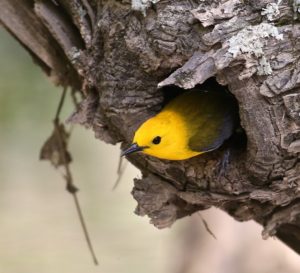
- “Manage pests without pesticides. It makes no sense to plant natives and then hire a mosquito fogger to fog your property. Contrary to popular belief, mosquito fogging kills all insects including essential bird food, not just mosquitoes. The same non-target effects can be said of broad-spectrum lawn treatments.”
See the NWF blog article What You Need to Know Before Spraying for Mosquitoes for information on what’s in the sprays, how they hurt wildlife and alternatives to spraying.
See the NHBA blog article The Invasion of the Asian Tigers for information on dealing with mosquitoes.
Consider using Bti dunks to deal with mosquitos. See this Mosquito Bucket of Doom article.
Avoid buying plants on which neonicotinoid insecticide has been used. It is a systemic insecticide taken up by the whole plant that harms bees and other pollinators. See the NHBA blog article Neonics, Bee-Killing Insecticides that also Harm Birds. - “Turn off outdoor lights, install motion detectors, or switch to yellow bulbs. Residential outdoor lights are a major cause of insect declines, particularly the moths that create the caterpillars that feed the birds.” Bright lights also confuse birds during spring and fall migration as they pass overhead at night.
- “Be mindful of wildlife when doing routine maintenance. Avoid mowing in the evening when toads are active. Raise mower blades so that you mow over the box turtle instead of through it.” Put guards on basement window wells so that frogs, toads and baby birds don’t get trapped and die. Avoid all shearing and cutting back of shrubs and vines, and removal of trees in spring and summer when birds are nesting.
Part Two: How to make your habitat MORE FRIENDLY for wildlife
There is more to do than planting natives and removing invasives to build an ecosystem that fully supports wildlife. Here are some needed steps. They are not listed in order of importance.
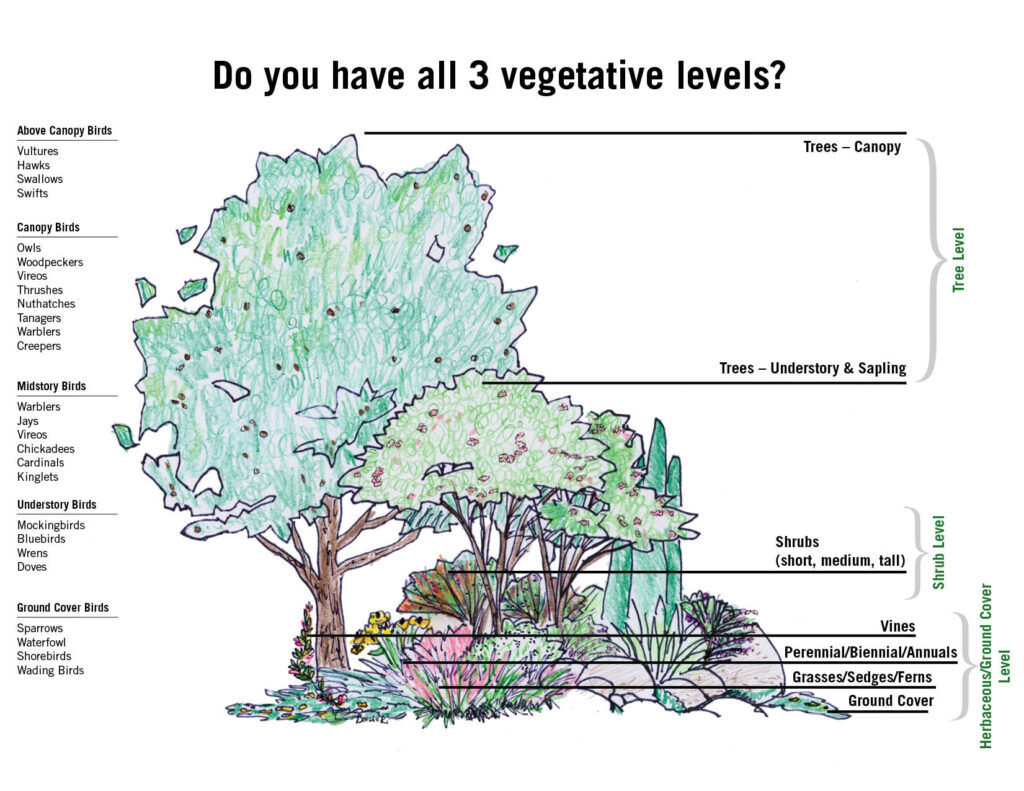
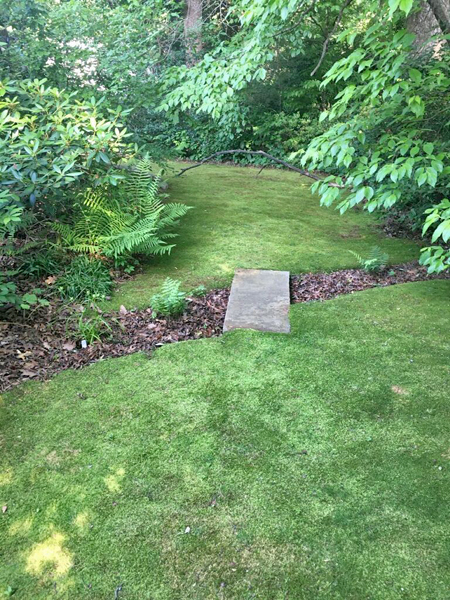
Photo by Susan Andrews
- Verify that you have, or are adding, important keystone species of native plants to your property.
- Verify that your property has 3 essential vegetation layers (trees, shrubs and herbaceous/ground cover), necessary for the well-being of birds.
- Reduce lawn area with non-native turfgrass to minimum needed. Lawns with the typical nonnative grasses such as fescue can require fertilizers, herbicides, insecticides, and frequent mowing, all of which are detrimental to wildlife and the environment. Grass lawns also produce few insects for birds. Creating natural areas with native plants and leaf mulch is a much better and lower maintenance alternative. Want a green walkable surface where you have lots of shade? Try native moss lawns or paths for a wildlife friendly and beautiful alternative to grass lawns! See the Winston-Salem city 2024 article on the new natural landscaping ordinance.
- Leave your leaves for mulch, fertilizer, and nesting habitat. Leaves, when they fall from your trees and other plants, are nature’s way of fertilizing and mulching the vegetation in your yard and creating a healthy soil ecosystem. Mature habitats can be self-sustaining if leaves are left where they fall. Many insect larvae such as fireflies rely on leaf litter for their habitat and food and, in turn, feed the birds. The caterpillars of many moths and butterflies fall off the host trees and plants and pupate in the leaf litter or in native groundcover underneath. The caterpillars of at least one local butterfly, the Red-banded Hairstreak, eat the fallen leaves themselves. If you don’t have enough mature trees to provide the leaves, you may be able to obtain a load of leaves for free during city leaf collection. Doug Tallamy writes that if you have too many leaves, the solution is to create more plant beds. See our website page on Leave Your Leaves.
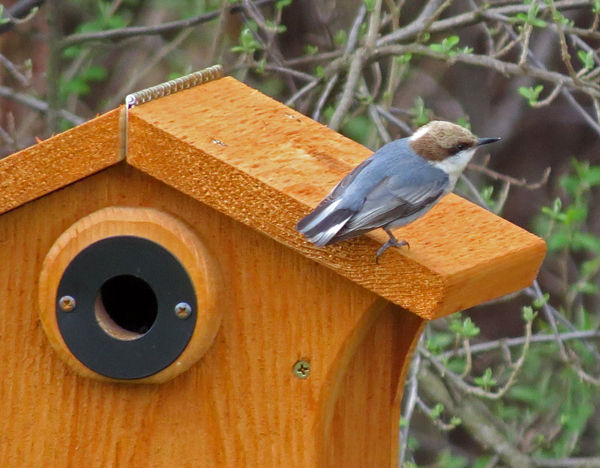
Photo by Gail Crotte
- Have a wildlife water feature: Birds and other wildlife need a ready source of fresh water to survive, so bird baths, water drips, waterfall rocks, small ponds (with sloping edges), etc. improve your habitat. These water sources need to be kept clean and fresh, especially bird baths. Also locate bird baths out of reach of predators such as cats. Want to take the next step? In winter months, keep at least one water feature free of ice by adding a bird bath heater or purchasing a self-contained heated bird bath. There are also solar options to consider.
- Put up eastern bluebird and brown-headed nuthatch nest boxes. These are local species of special concern due to loss of nesting habitat. The brown-headed nuthatch lives only in the Southeastern U.S. It is Forsyth Audubon’s logo bird. They need an entrance hole that is 1 1/8” in diameter to keep larger birds from evicting them and taking over the nest box. Bluebirds need an entrance hole that is 1 1/2″ in diameter. Anything larger than 1 1/2” can admit the invasive European Starling which would supplant the bluebird family. Some nest boxes are more decorative than functional and can be dangerous to birds rather than helpful.
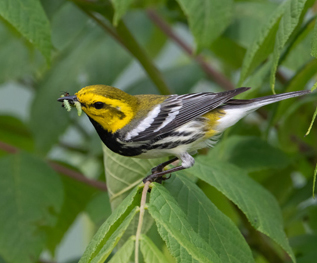
Photo by David Disher
- Have a variety of nectar producing plants blooming and host plants available throughout growing season to support pollinators.
Add native plants that bloom at different times of the year to give pollinators the nectar and pollen they need as food throughout the growing season. Also use a mix of nectar and host plants. Butterflies and moths lay eggs on or near host plants so the emerging caterpillars can eat the leaves. And don’t forget the trees. Species like the native oaks host a tremendous number of caterpillars. (see the blog article Trees Are for the Birds for more detail). You are growing food for the caterpillars, and the host plants will regrow the foliage that is lost. See the blog articles Your Yard Is Your Pollinator Garden, To Every Plant There is a Season, and Creating a Pollinator Friendly Yard for more information.
The NC Botanical Garden has a helpful brochure on Creating Your Pollinator Garden (.pdf file).
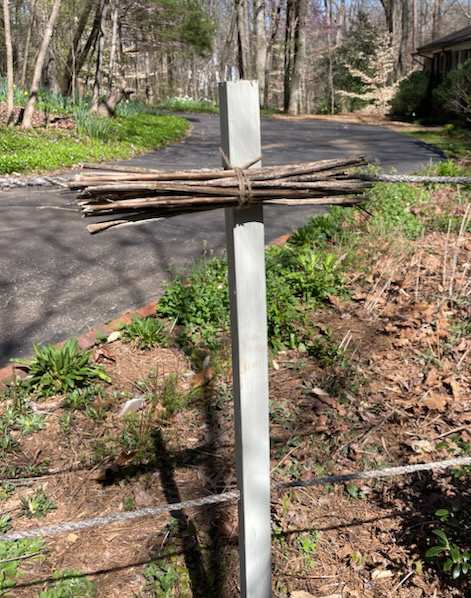
Photo by Susan Andrews
- Leave plants that have died back for the winter and leave pithy stems. Try to avoid cutting down your native plants that have died back for winter and wait as far into late winter or early spring as you can. The plant tops you leave provide nesting habitat for butterfly caterpillars and other beneficial insects and, of course, provide seeds and berries for birds. The caterpillars of butterflies like monarchs will drop off herbaceous host plants (milkweeds in this case) at the end of their feeding and crawl away to other plants or structures nearby to form their chrysalises.
Some native bees are pithy-stem nesters and will use old plant stems from the previous year to nest in. They may have several broods in stems left in the garden. Nesting stems are those that are ~ 1/8″ to 5/16″ in diameter and do not “squish” when you squeeze them, for example goldenrod and ironweed. During spring clean-up, it is important to leave about 12″-24″ of nesting stems when you cut these plants down to provide nesting habitat into summer, fall, and even next winter. The greenery of the plants will outgrow and hide the stems.
See Nesting & Overwintering Habitat for Pollinators & Other Beneficial Insects (xerces.org) for more information. - Leave snags and nurse logs. A snag is part of a dead or dying tree left standing, and a nurse log is a fallen tree or limb left lying on the ground. A snag can provide nesting habitat for birds and beneficial insects. Some wood nesting bees also use the soft wood of snags. Woodpeckers also use them to find insects. CAUTION: Only leave snags where they won’t present safety hazards when they eventually fall. A nurse log can provide nesting habitat for pollinators, a place for new plants to germinate, and a place to find insects for birds. Nurse logs are pupation sites for some caterpillars and for wood nesting bees.
- Leave a spot of bare ground for native bees. In addition to nesting in snags, nurse logs, and stems, a majority of native bees nest in the ground. Ground nesters prefer a small patch of bare, loose soil (not compacted clay), with a slight southerly slope. For more information see https://xerces.org/blog/clear-space-for-bees-why-pollinators-in-your-yard-need-access-to-bare-ground. Even 2 square feet can be enough to help them. See the blog article Plant for Specialist Bees for more detail on creating habitat for native bees. See https://www.xerces.org/blog/want-to-save-bees-focus-on-habitat-not-honey-bees for information on honeybees. Note: Yellow jacket wasps sometimes build nests in existing holes in the ground and defend their nest by swarming out and stinging. You are unlikely to be stung by ground nesting native bees.
- Use no fertilizer (preferable) or use compost or organic fertilizer. Healthy garden soil with leaf mulch generally needs no fertilizing. If you must use fertilizers, use organic ones. In contrast to non-organics, they release nutrients slowly preventing runoff of chemicals that damage streams and lakes, and they build the soil and nourish micro-organisms that are vital to soil health.
- Use electric-powered mowers, blowers, and string trimmers instead of gas. Gas powered lawn mowers, leaf blowers, and string trimmers cause air pollution and noise pollution. Using electric-powered lawn equipment, either battery or corded, is better for the environment. As you reduce lawn area and use leaves as mulch, the need for this equipment will be reduced and, in some cases, eliminated.

